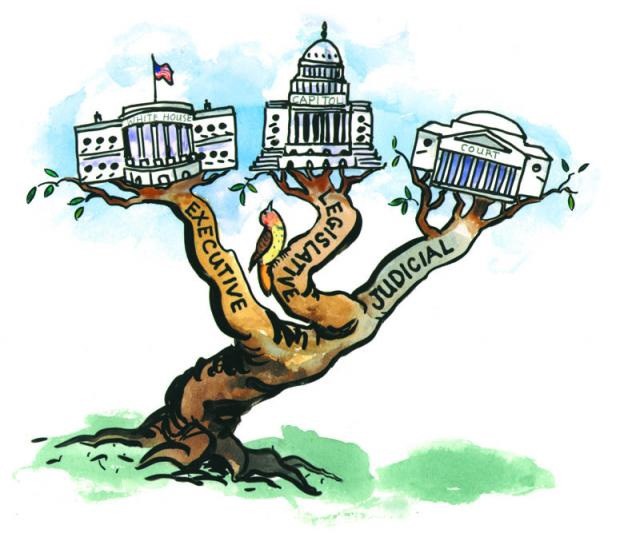November 7, 2019 | Sebastian Llaca
Since the widespread introduction of computing into American business and society, software patents have formed a contentious legal battleground. Much of the debate revolves around the dispute regarding whether inventions such as an algorithm constitute “abstract ideas,” and therefore can be patented if they are implemented on a computer. As more technological innovations are made, the question will only become more relevant – which, if any, software programs can be protected from infringement? Can one company file a lawsuit against another if it believes that a rival’s “proprietary” software program should not have been granted a patent at all? Examining the United States Supreme Court case Alice Corp. v. CLS Bank International can provide a valuable case study in this form of litigation.
Alice Corporation, an Australian company, had been granted four patents in the United States. Each of these patents, filed by the company’s founder Ian K. Shepherd, involved a “computer-based data processing system” which managed settlement risks in transactions with multiple stakeholders.[i] In other words, the system acted as a third party that ensured that two parties would follow their portion of the contract during computerized exchanges of securities, thereby lowering the probability that the other party would be left with a loss.[ii] However, CLS Bank International developed a similar computer program which managed currency transactions along the same principle.
Upon discovering the patents held by Alice Corporation, CLS Bank International filed a lawsuit against Alice on May 24, 2007 in the United States District Court for the District of Columbia. This lawsuit asked for a declaratory judgement that would invalidate the patents and protect them from charges of intellectual property infringement[iii]. Following this action, Alice countersued CLS, stating that CLS had actively engaged in patent infringement. The District Court ruled in favor of CLS, granting the company a summary judgement and declaring that Alice’s system consisted of “unpatentable subject material.”[iv] Alice then appealed the District Court’s ruling, this led to the case being heard by the United States Court of Appeals for the Federal Circuit. The Court of Appeals overruled the District Court, holding that the program was “directed to practical applications of invention falling within the categories of patent eligible subject matter”.[v] However, when the case was reheard a year later, the Court of Appeals reversed its prior decision, agreeing with the lower court that “the method, computer-readable medium, and corresponding system claims were all ineligible to be patented”.[vi]Following these developments, the case was brought to the United States Supreme Court in 2014.
In Alice Corp. v. CLS Bank International, the Supreme Court considered whether Alice’s patents were valid under 35 U.S.C. § 101. This United States Code statute states that a “new and useful process, machine, manufacture, or composition of matter, or any new and useful improvement thereof” is eligible to be patented. The Court was specifically interested in whether the patents involved the implementation of an “abstract idea,” as it had previously ruled that the statute implied that such concepts were not patentable.[vii]
Alice argued that the exception for “abstract ideas” was only meant to have a very narrow application, as it could only refer to basic principles such as the laws of nature. CLS, however, countered that since the software produced by Alice relied on the idea of settlement risk, the program was simply an implementation of a fundamental concept of economics; therefore, under a broad reading of the “abstract idea” exception, Alice would not be able to patent their system.[viii]
In the majority opinion written by Justice Clarence Thomas, the Court agreed with the reasoning put forth by CLS, stating that Alice’s patents were invalid and declaring that the patents “are drawn to the abstract idea of [settlement risk] and that merely requiring generic computer implementation fails to transform that abstract idea into a patent-eligible invention,” thereby affirming the rulings of the lower courts.[ix]
The foundations of the Court’s conclusion rested heavily on the precedent set by the case Mayo Collaborative Services v. Prometheus Laboratories, Inc. two years earlier. In Mayo v. Prometheus, the court had developed a two-pronged test to determine whether a claim is eligible to be patented. In the first step, the Court determines whether the patents in question ultimately derive from an abstract idea. If that it is the case, the Court then shifts its inquiry to the second step, in which it looks for an “inventive concept that is sufficient to transform the claimed abstract idea into a patent-eligible application.”.[x] If the claim does not meet either of these requirements, then a patent may not be granted.
Unfortunately for Alice, their computer program failed the Mayo examination on both counts. First, the Court found that the patents were indeed based on an “abstract idea.” In order to support this point, Justice Thomas cited the case Bilski v. Kappos, which, much like Alice’s software, involved a patent that the Court had invalidated because it was based on a “fundamental economic practice long prevalent in our system of commerce and taught in any introductory finance class”.[xi] Justice Thomas then stated that Alice’s software also did not add a facet to the invention that was significantly different from the basic concept that it displayed. He then compared the program to a patented process that was the focus of the case Gottschalk v. Benson, which consisted of an algorithm that was implemented on a computer. In Benson, the Court had decided that “simply implementing a mathematical principle on a physical machine, namely a computer, is not a patentable application of that principle”.[xii] Since Alice’s program only applied a fundamental idea of financial economics through a computer, Justice Thomas concluded that it similarly did not meet the second requirement. Therefore, the Court unanimously ruled that the patents held by Alice Corporation were invalid and decided the case in favor of CLS Bank International.
The consequences of Alice Corp. v. CLS Bank International rippled through the technology sector and adjacent industries. The case reaffirmed that a patent should not be ultimately based on an abstract, fundamental idea. If that is the case, however, then it must at least add an inventive concept to the invention; implementing a task through a computer does not make a process unique on its own. This made it more difficult to patent computer programs. As a result, the number of software patents issued declined in the months following the decision, with “business method” software patents falling by almost 60 percent.[xiii] With this decision, the Supreme Court solidified the criteria that software must fulfill in order to be granted a patent, thereby restricting the scope of applicants that succeed.
[i] Shepherd, Ian K. Methods and apparatus relating to the formulation and trading of risk management contracts.
[ii] Hinderlie, Katherine, and Rose Nimkiins Petoskey. “Alice Corporation Pty. Ltd. v. CLS Bank International.” (Cornell University, 2014).
[iii] “Alice Corporation v. CLS Bank International.” (Oyez).
[iv] CLS Bank Intern. v. Alice Corp. Pty. Ltd., 768 F. Supp. 2d 221 (D.C. 2011).
[v] CLS Bank Intern. v. Alice Corp. Pty. Ltd., 685 F.3d 1341 (Fed. Cir. 2012).
[vi] CLS Bank Intern. v. Alice Corp. Pty. Ltd., 717 F.3d 1269 (Fed. Cir. 2013).
[vii] Alice Corp. Pty. Ltd. v. CLS Bank Intern., 134 S. Ct. 2347, 573 U.S. 208, 189 L. Ed. 2d 296 (2014), 2354.
[viii] Hinderlie, Katherine, and Rose Nimkiins Petoskey. “Alice Corporation Pty. Ltd. v. CLS Bank aaaaInternational.” Legal Information Institute. Cornell University, March 18, 2014. aaaahttps://www.law.cornell.edu/supct/cert/13-298
[ix] Alice Corp. Pty. Ltd. v. CLS Bank Intern., (2014), 2352.
[x] Alice Corp. Pty. Ltd. v. CLS Bank Intern., (2014), 2355.
[xi] Alice Corp. Pty. Ltd. v. CLS Bank Intern., (2014), 2356.
[xii] Alice Corp. Pty. Ltd. v. CLS Bank Intern., (2014), 2357.
[xiii] Bessen, James. “What the Courts Did to Curb Patent Trolling – for Now” (Atlantic Media Company, 2014).
Photo Credit: American University





Leave a comment